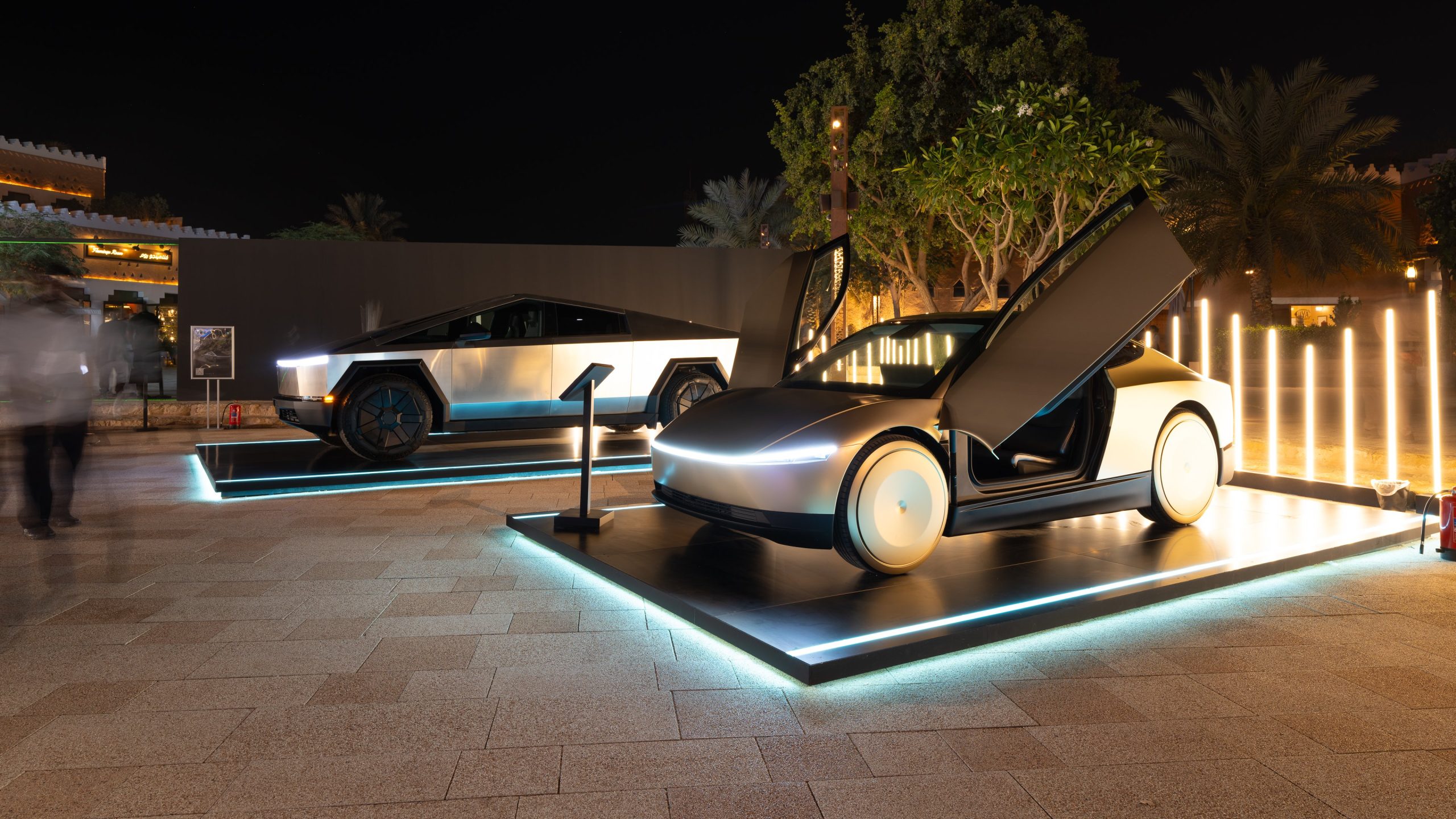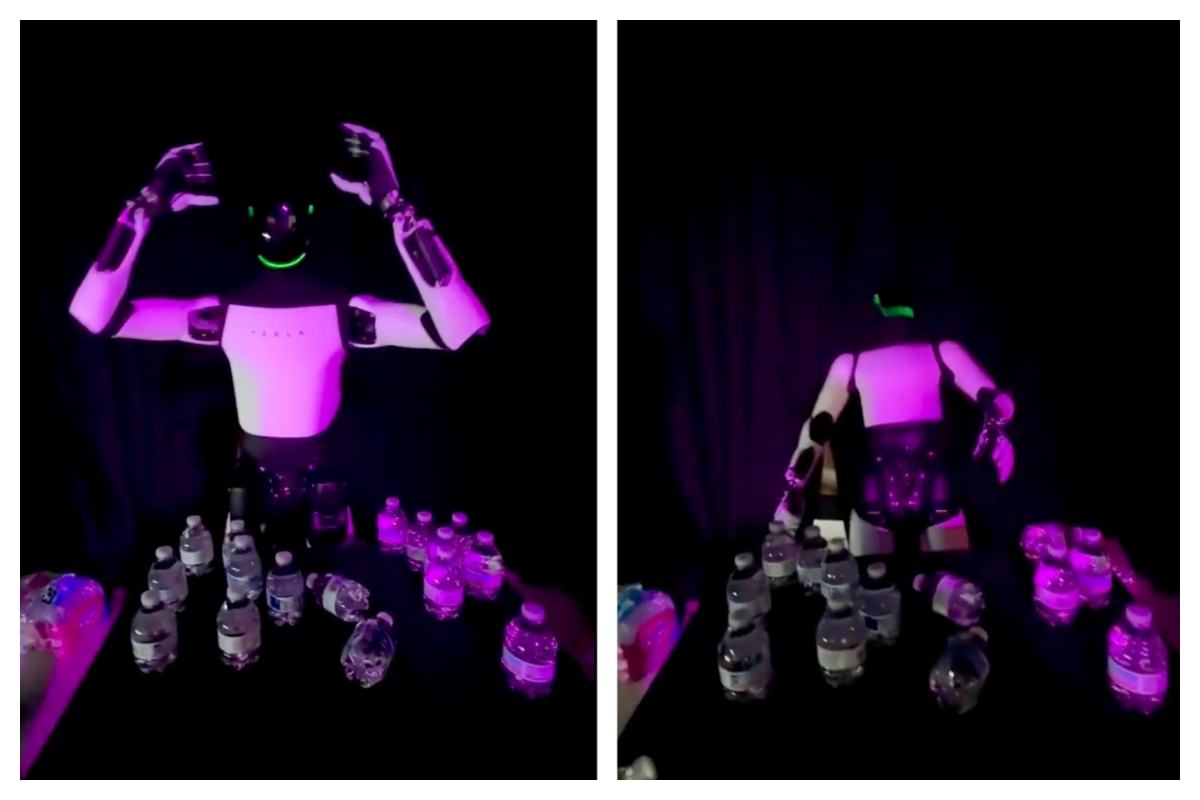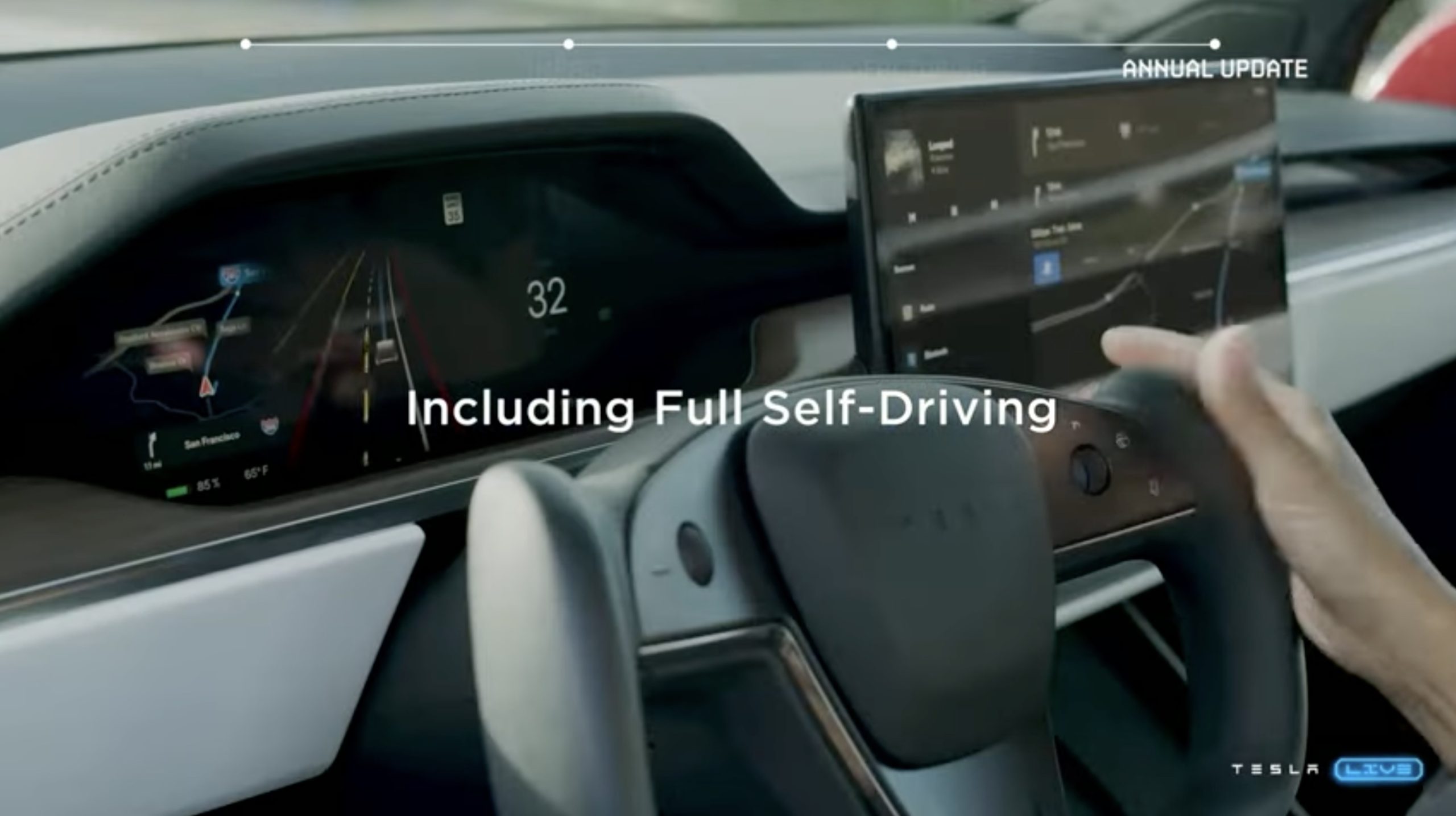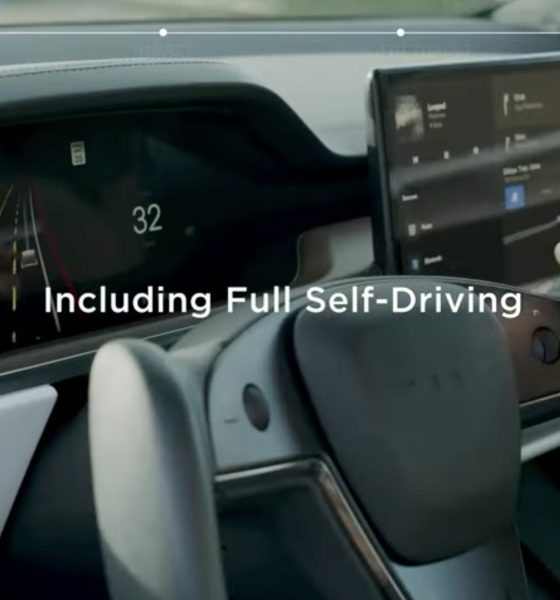It has been several weeks since Tesla kicked off the roll-out of its latest FSD Beta update, and a few Beta testers shared their thoughts on v10.69.2. FSD Beta testers told Teslarati that v10.69.2 made noticeable improvements to FSD, but a few issues have lingered from 10.69.1.
Tesla FSD Beta 10.69.2 Reviews
After talking to quite a few FSD Beta testers about 10.69.1, a pattern started to emerge. Testers mentioned similar issues repeatedly. The top three mentioned by testers were phantom braking, issues with turns, and speed limit recognition.
Lane selection issues seemed to be a prevalent one in FSD Beta 10.69.2. Multiple FSD Beta testers mentioned that their Tesla would take the turn lane on the road even if they intended to go straight.
“A major issue that I’ve had with this release has to do with lane selection. I find that sometimes, it’s going into an inappropriate lane. And sometimes it’s confused which lane to choose and bunks between a couple of lanes,” noted Dr. Sultan Rahaman, M.D.
“On one occasion, it was moving from the right lane into a right-turn-only lane. A lane that was going into a plaza that was just a right only. But it was driving down that lane at normal speed as if it believed that this lane was going straight through, and it was not, it was just a right turn lane. So I had to disengage because it seemed like it was identifying that right turn lane as just a regular lane going straight,” said Dr. Rahaman.
Long-time Tesla FSD Beta tester Les also experienced issues with lane selection and turns with v10.69.2.
“After multiple test loops and drives, there’s really just one main problem remaining for me at this point on 10.69.2, it’s significant, and that is lane selection,” noted Les.
Les also pointed out two other issues with FSD Beta 10.69.2: multilane turns and opposing turns in close succession. He noted that midterm, his car crosses lanes on 50% of attempts.
Les also stated that his car was successful 50% of the time when taking succeeding turns in opposite directions. “If I have a right turn followed by a left (or vice versa), within a space of a half a block or less, the car at this point fails to get over in time or oddly moves in the opposite direction,” he noted.
Dr. Rahaman also mentioned some issues with turns. He noted seeing improvements with left turns, but he also highlighted that his vehicle would perform left turns a bit aggressively.
“There’s another left turn, however, that’s a simple left turn from just crossing two lanes of traffic into my community—which is an unprotected left turn. I don’t like how it does that. I find that it gets very close to the incoming traffic, and at one point, it seems like it was just hesitating. I think I had to disengage because it seemed like it was moving forward, and traffic was coming,” Dr. Rahaman noted.
Tesla FSD Beta 10.69.2.2 Reviews
Tesla FSD Beta 10.69.2.2 is currently rolling out to more drivers. Plans are underway to roll out FSD Beta 10.69.2.3 shortly after AI Day 2 next week.
Les told Teslarati that there wasn’t any notable changes between 10.69.2, though there were still issues with lane selection. “If this lane selection problem can be solved, it will feel like a good step improvement for me,” he said.
Beta tester Neeraj noted that FSD maintains the posted speed limit even during inclement weather, like while it’s raining, and at night or on curvy roads. He noted that it gets a little unnerving when FSD does not slow down during those appropriate times. Neeraj also noted that his vehicle took long to turn in areas with no traffic lights.
Beta tester Howard also mentioned having trouble with turns since 10.69.2. “Turns at lights and stop signs way, way worse than 69.0!!!! Unusable in my area. Two times it almost caused an accident, once by stuttering and once by entering the opposing lane! Both times there was light traffic, 90-degree turn, good center, and fog lines, two lane road intersection another two lane road,” Howard told Teslarati.
FSD Beta 10.69.2 and 10.69.2.2 Verdict
Overall, testers seem impressed with v10.69 updates thus far. Most of the testers who spoke with Teslarati highlighted that v10.69 significantly improved FSD Beta. A lot of the beta testers stated that they drive more confidently through residential streets after FSD Beta 10.69.
However, a few did note that FSD might not be ready for a wider release by the end of the year. The main reason they believe FSD Beta isn’t ready for more drivers is because it still needs to be well-monitored.
“I still have to be cautious though. I would not want it in the hands of individuals who will not be alert and ready to take control at a moment’s notice,” one beta tester noted.
Have you tried out FSD Beta 10.69.2.2? I’d like to hear from you! Contact me at maria@teslarati.com or via Twitter @Writer_01001101.

Investor's Corner
Tesla gets price target boost, but it’s not all sunshine and rainbows

Tesla received a price target boost from Morgan Stanley, according to a new note on Monday morning, but there is some considerable caution also being communicated over the next year or so.
Morgan Stanley analyst Andrew Percoco took over Tesla coverage for the firm from longtime bull Adam Jonas, who appears to be focusing on embodied AI stocks and no longer automotive.
Percoco took over and immediately adjusted the price target for Tesla from $410 to $425, and changed its rating on shares from ‘Overweight’ to ‘Equal Weight.’
Percoco said he believes Tesla is the leading company in terms of electric vehicles, manufacturing, renewable energy, and real-world AI, so it deserves a premium valuation. However, he admits the high expectations for the company could provide for a “choppy trading environment” for the next year.
He wrote:
“However, high expectations on the latter have brought the stock closer to fair valuation. While it is well understood that Tesla is more than an auto manufacturer, we expect a choppy trading environment for the TSLA shares over the next 12 months, as we see downside to estimates, while the catalysts for its non-auto businesses appear priced at current levels.”
Percoco also added that if market cap hurdles are achieved, Morgan Stanley would reduce its price target by 7 percent.
Perhaps the biggest change with Percoco taking over the analysis for Jonas is how he will determine the value of each individual project. For example, he believes Optimus is worth about $60 per share of equity value.
He went on to describe the potential value of Full Self-Driving, highlighting its importance to the Tesla valuation:
“Full Self Driving (FSD) is the crown jewel of Tesla’s auto business; we believe that its leading-edge personal autonomous driving offering is a real game changer, and will remain a significant competitive advantage over its EV and non-EV peers. As Tesla continues to improve its platform with increased levels of autonomy (i.e., hands-off, eyes-off), it will revolutionize the personal driving experience. It remains to be seen if others will be able to keep pace.”
Additionally, Percoco outlined both bear and bull cases for the stock. He believes $860 per share, “which could be in play in the next 12 months if Tesla manages through the EV-downturn,” while also scaling Robotaxi, executing on unsupervised FSD, and scaling Optimus, is in play for the bull case.
Will Tesla thrive without the EV tax credit? Five reasons why they might
Meanwhile, the bear case is placed at $145 per share, and “assumes greater competition and margin pressure across all business lines, embedding zero value for humanoids, slowing the growth curve for Tesla’s robotaxi fleet to reflect regulatory challenges in scaling a vision-only perception stack, and lowering market share and margin profile for the autos and energy businesses.”
Currently, Tesla shares are trading at around $441.
News
Tesla Optimus dramatically collapses after teleoperator mishap
It seemed blatantly obvious that whoever was controlling the Optimus robot from behind the scenes did not disconnect their ability to manipulate its movements

Tesla Optimus dramatically collapsed after a teleoperator mishap at the company’s “Future of Autonomy Visualized” event in Miami this past weekend.
It seemed blatantly obvious that whoever was controlling the Optimus robot from behind the scenes did not disconnect their ability to manipulate its movements, then left the controls, causing Optimus to collapse.
A video captured at the event shows Optimus doing a movement similar to taking a headset off, likely what the teleoperator uses to hear guest requests and communicate with other staff:
🚨 Tesla Optimus mishap at the Miami event
To be fair, don’t we all want to do this around the Holidays? pic.twitter.com/EJ5QKenqQd
— TESLARATI (@Teslarati) December 8, 2025
After the headset removal motion was completed, Optimus simply collapsed backward, making for an interesting bit of conversation. While it was a mishap, it was actually pretty funny to watch because of the drama displayed by the robot in the situation.
This was obviously a mistake made by the teleoperator, and does not appear to be a spot where we can put any sort of blame on Optimus. It would have likely just stood there and waited for controls to resume if the teleoperator had disconnected from the robot correctly.
However, details are pretty slim, and Tesla has not announced anything explaining the situation, likely because it seems to be a pretty face-value event.
Tesla Optimus shows off its newest capability as progress accelerates
The Tesla Optimus program has been among the most hyped projects that the company has been working on, as CEO Elon Musk has extremely high hopes for what it could do for people on Earth. He has said on several occasions that Optimus should be the most popular product of all time, considering its capabilities.
Obviously, the project is still a work in progress, and growing pains are going to be part of the development of Optimus.
In its development of Optimus Gen 3, Tesla has been working on refining the forearm, hand, and fingers of Optimus, something that Musk said is extremely difficult. However, it’s a necessary step, especially if its capabilities will not be limited by hardware.
All in all, Optimus has still been a very successful project for Tesla, especially in the early stages. The company has done an excellent job of keeping Optimus busy, as it helps with serving customers at events and the Tesla Diner, and is also performing tasks across the company’s manufacturing plants.
News
Tesla 2025 Holiday Update: Here’s what it includes, and what it’s missing

Tesla has finally announced the features for the 2025 Holiday Update, which includes a wide variety of new inclusions that are both functional and just for fun.
The new features are plentiful, but there were a handful of things we were expecting to see based on what we know. We don’t want to sound ungrateful, because there are a lot of great new things on the way with this update.
Here’s what was included:
Grok with Navigation Commands (Beta)
Grok will now have the ability to add and edit navigation destinations, which is a drastic improvement considering Tesla owners had to use their standard voice commands for this in the past.

The utilization of Grok will likely improve the navigation experience by offering some insight into your destination, including reviews and other points of interest nearby.
It will be enabled by using Grok’s “Assistant” personality.
Tesla Photobooth
“Turn your car into a photobooth! Take selfies from inside your Tesla & give yourself a makeover with fun filters, stickers, and emojis. Share with others right from the Tesla app.”
This feature will be available within the Toybox.
Dog Mode Live Activity
When using Dog Mode to keep your four-legged friend comfortable in the car, you’ll now be able to check in on them as it will share periodic snapshots of the cabin, along with live updates on temperature, battery, and climate conditions.

Dashcam Viewer Update
Dashcam clips are awesome, but they’re void of a lot of information, which could be useful in some instances, especially if there is an accident.

Now, there will be additional details included on each Dashcam clip, like speed, steering wheel angle, and Self-Driving state.
Santa Mode
New graphics, trees, and a lock chime are now available.

Light Show Update
A new Light Show, called Jingle Rush, will be available.
Custom Wraps and License Plates in Colorizer
Colorizer will now be known as “Paint Shop” in the Toybox. You will now be able to personalize your Tesla Avatar with window tints, custom wraps, and license plates. Preloaded designs will be available, but owners will be able to use their USB Flash Drives to create one that suits their style.

Navigation Improvements
Changing the order of your destinations will be easier through a new “Favorites” tab, and Home and Work can now be set by dropping a pin.
There will also be “Suggested Destinations,” which will be determined through recent trips and habits while parked.
Supercharger Site Map
Perhaps the most significant feature of the Holiday Update, Tesla is adding a 3D view of select Tesla Superchargers by tapping “View Site Map.”
When navigating to a location with this capability, the site layout, live occupancy, and nearby amenities will be available. Drivers will also be able to choose which stall to Supercharge.

This is only available at a handful of locations currently, but it will expand to more Superchargers as it becomes more robust.
Automatic Carpool Lane Routing
Navigation will include an option to utilize carpool lanes. Your route will automatically choose the carpool lane when eligible.
Phone Left Behind Chime
If the in-car occupant detection system does not see anyone in the car and there is a phone key, or if a phone is left inside the cabin, your Tesla will chime a few seconds after the doors close.
Charge Limit Per Location
You can now save a charge limit for the current location while parked and it will be applied automatically the next time you charge there.
ISS Docking Simulator
In a SpaceX collaboration, Tesla has added this game to its in-car Arcade:
“Become an astronaut and prove your skills by docking with the International Space Station. Control & guide the rocket in this 3D docking simulator game using a set of controls based on actual interfaces used by NASA astronauts.”
Additional Improvements
-
Enable or disable wireless phone charging pads in Controls > Charging (S3XY) or Controls > Outlets & Mods (Cybertruck)
-
Add Spotify tracks to your queue right from the search screen & scroll through large Spotify playlists, albums, podcasts, audiobooks & your library seamlessly, without paging
-
Take the vibes up another level with rainbow colors during Rave Cave. Accent lights color will change along with the beats of your music. App Launcher > Toybox > Light Sync
-
Lock Sound now includes Light Cycle from Tron Mode. Toybox > Boombox > Lock Sound
What’s Missing
There are a handful of features we expected to see with the Holiday Update, but were not included.
Banish Feature
Tesla has been teasing the Banish functionality for quite a few years, but evidently, it is not quite there yet.
Banish will allow owners to get out of their vehicle at the entrance of their destination, and the car will go find a spot and park itself. Some refer to it as “Reverse Summon.”
Apple CarPlay
With all of the rumors regarding Apple CarPlay and then the evidence that Tesla was working to bring CarPlay to vehicles, we really expected it to come with the Holiday Update.
We’re not upset it’s not here, though. Tesla’s in-car UI is significantly better, at least in our opinion.
Parking Spot Selection
One of the biggest gripes about the new Arrival Features with Full Self-Driving v14 is that choosing a set parking spot is not available. This is especially frustrating for Tesla owners who rent or live in townhouse neighborhoods or apartment complexes with assigned parking.
Tesla seems to be working on this based on the release notes for v14.2, where it said future capabilities would include Parking Spot Selection.










